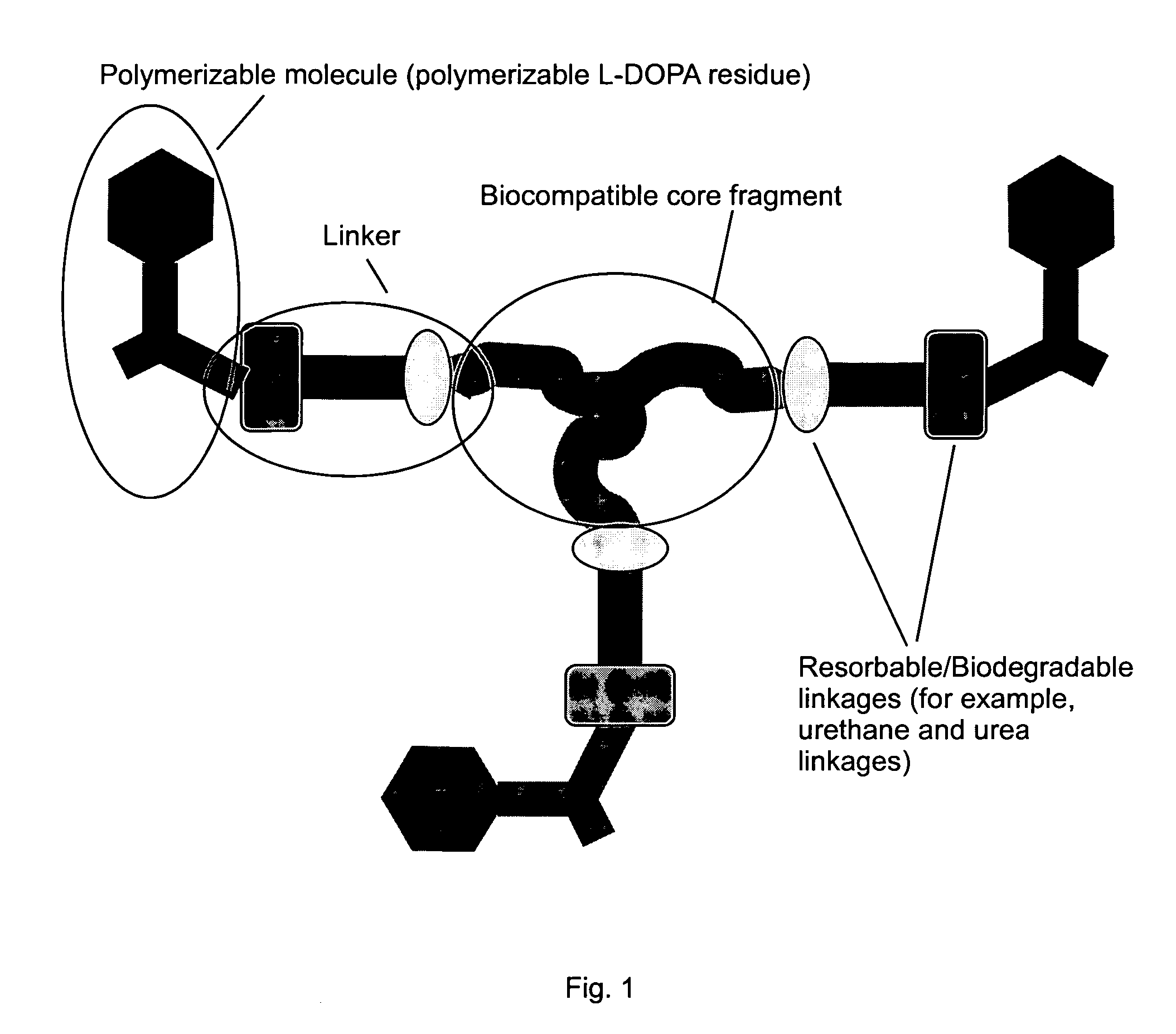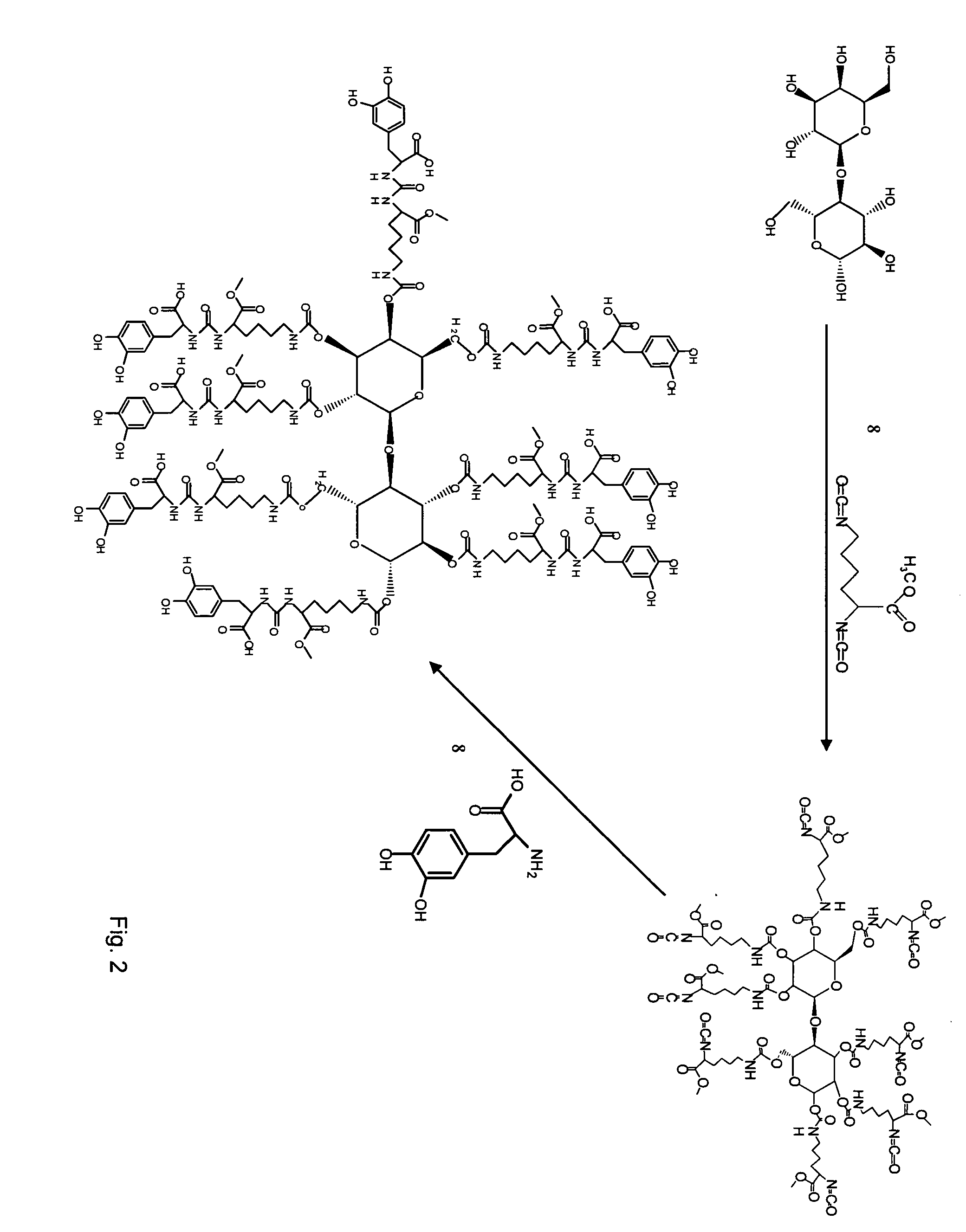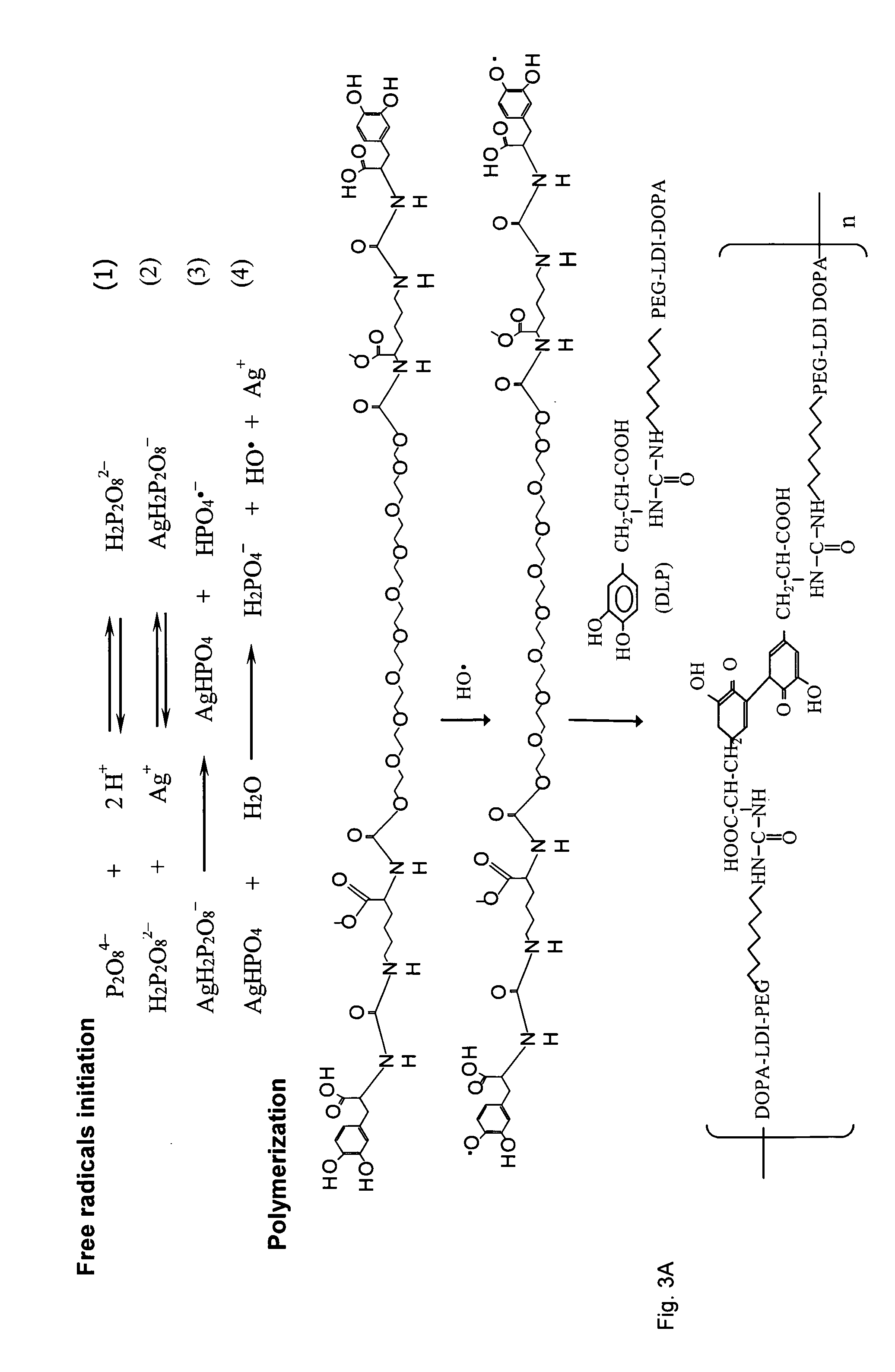Wound healing polymeric networks
a polymer network and wound technology, applied in the field of wound healing polymer networks, can solve the problems of confounding diffusion and elution calculations, skin wounds are particularly prone to these infections, and infections adversely affecting wound repair
- Summary
- Abstract
- Description
- Claims
- Application Information
AI Technical Summary
Benefits of technology
Problems solved by technology
Method used
Image
Examples
experimental examples
[0128] Materials
[0129] All reagents in the polymer gel namely polyethylene glycol (PEG), 3,4 dihydroxyphenyl-L-alanine (DOPA), lactose (Lac), silver (Ag), peroxydiphosphate, N-Hydroxysuccinimide (NHS), dicyclohexylcarbodiimide (DCC), methyl trifluoroacetate, 1,1,3,3-tetramethylguanidine (TMG), collagen type I (acid soluble, from kangaroo tail) were obtained from Sigma Chemical Co. (St. Louis, Mo., USA). Lysine diisocyanate methyl ester (LDI) was obtained from Chemical Division, Kyowa Hakko Kogyo Co. Ltd. (Tokyo, Japan). Tissue culture medium was from Life Technologies (Grand Island, N.Y., USA).
[0130] Ten microorganisms commonly associated with human skin or wound infections were selected as a challenge. The microorganisms were obtained either from ATCC (Manassus, Va., USA) or from human isolates from the Clinical Microbiology Laboratory of the UPMC Presbyterian / Shadyside Hospital; except Eschericia coli and Acinetobacter baumanii which were recovered from an actual human wound. Mi...
PUM
| Property | Measurement | Unit |
|---|---|---|
| Time | aaaaa | aaaaa |
| Concentration | aaaaa | aaaaa |
| Concentration | aaaaa | aaaaa |
Abstract
Description
Claims
Application Information
 Login to View More
Login to View More - R&D
- Intellectual Property
- Life Sciences
- Materials
- Tech Scout
- Unparalleled Data Quality
- Higher Quality Content
- 60% Fewer Hallucinations
Browse by: Latest US Patents, China's latest patents, Technical Efficacy Thesaurus, Application Domain, Technology Topic, Popular Technical Reports.
© 2025 PatSnap. All rights reserved.Legal|Privacy policy|Modern Slavery Act Transparency Statement|Sitemap|About US| Contact US: help@patsnap.com



